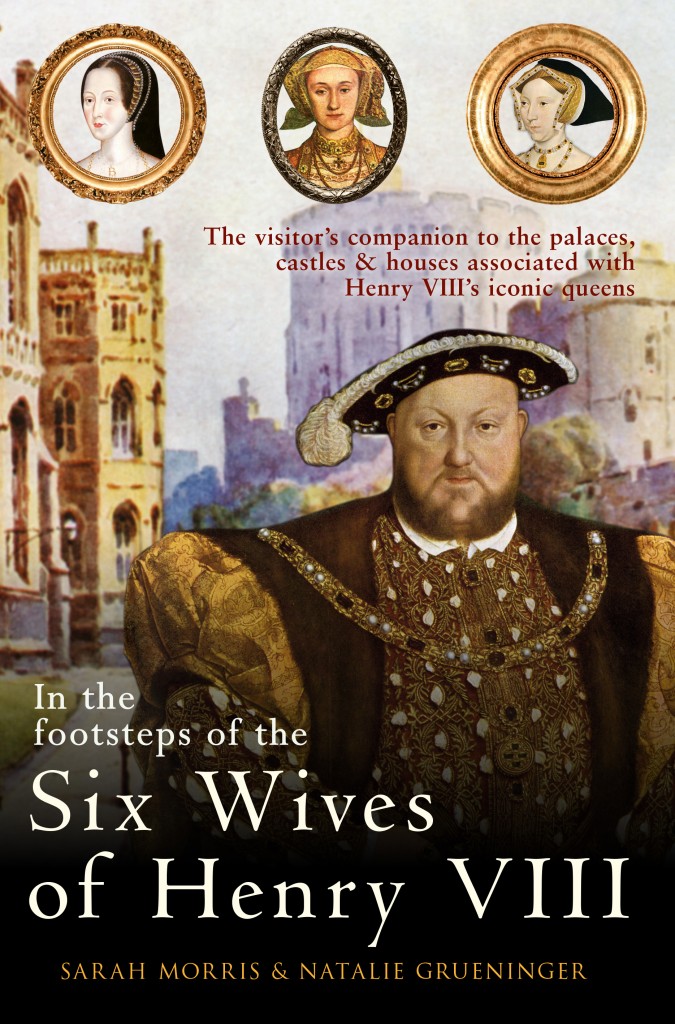
Natalie Grueninger and Sarah Morris, authors of the best-selling In the Footsteps of Anne Boleyn, are celebrating the release of their new book In the Footsteps of the Six Wives of Henry VIII with a week-long book tour. Fans will be familiar with Natalie and Sarah’s lovingly detailed explorations of the historical sites associated with Queen Anne Boleyn. Now In the Footsteps of the Six Wives of Henry VIII brings you even closer to those six fascinating women, from their childhoods through to their lives as Queens of England.
Today Sarah Morris joins us to discuss the Queens who still capture everyone’s heart, the enigmatic Anne Boleyn and Anne of Cleves.
The Making of an English Queen
By Sarah Morris
I am fascinated by how our early experiences shape our character, and how our character in turn determines our experience. One might argue that we are, in fact, architects of our own destiny, and that the blueprint for this is laid down in childhood, through the people we meet, the culture we are raised in and the very places we call home. I believe that if you want to understand the lives of any of Henry’s consorts, you must first understand the forces that shaped the women during their most impressionable years.
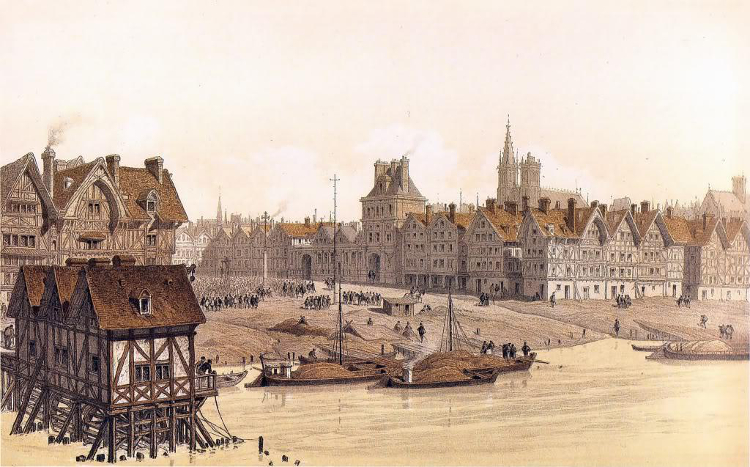
I felt this keenly with Anne Boleyn in following the teenaged Anne through the cramped streets of medieval Paris and the sunny valleys of The Loire during the research for our first In the Footsteps book, In the Footsteps of Anne Boleyn. I was particularly struck by how her exposure to powerful, influential women, such as Margaret of Austria, Louise of Savoy and the future Marguerite of Navarre must have shaped Anne’s female identity and self belief, forging the idea that it was possible for a woman to occupy a potent role alongside any man. It was not hard to see the origin of Anne’s reforming mind, exposed as she was to leading lights of the humanist age, alongside reformist writers, such as Jacques Lefèvre d’Étaples. At the same time, Anne blossomed into a young woman, nurtured by a court that valued elegance and grace; one that encouraged creative expression through prose, music and dance – all arts in which Anne was to become accomplished. Anne Boleyn may well have been an English girl, but it was the Hapsburg and French courts that breathed life into the woman that would transform a country.
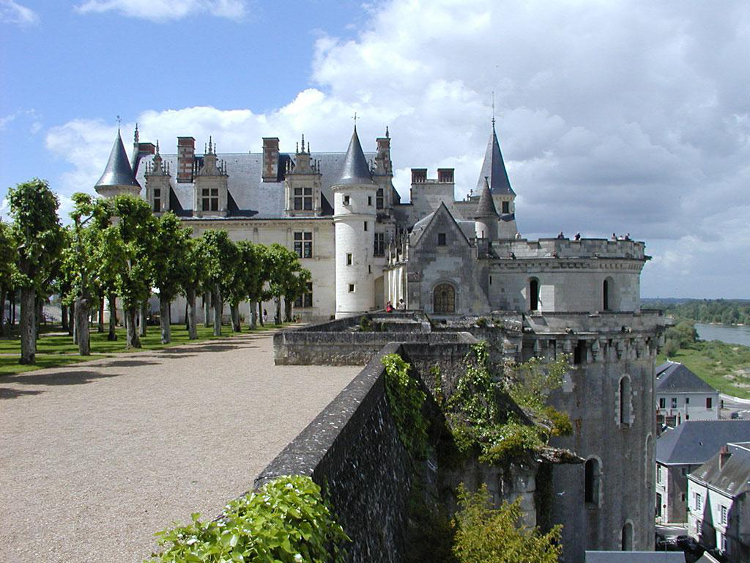
With this second book, Natalie and I now had the opportunity to explore the early years of Henry’s other, five queens. I was honoured (as it turns out) with the task of researching the formative years of Anne of Cleves, or ‘Anna von Jülich-Kleves-Berg’, to give Henry’s fourth wife her full Germanic name. I would be travelling to modern day, north-west Germany, to the Rhine Valley, there to immerse myself in the palaces and castles of the long-lost ducal principality. My aim was to conjure up once more the cultural milieu that delivered to England this woman, who the French Ambassador described at the time as being, ‘of very assured and resolute countenance’ and who in every way behaved ‘like a princess’. I was intrigued; who would I find lying behind the butt of many a historical joke, renowned as she is for her displeasing appearance as ‘the Flander’s Mare’?
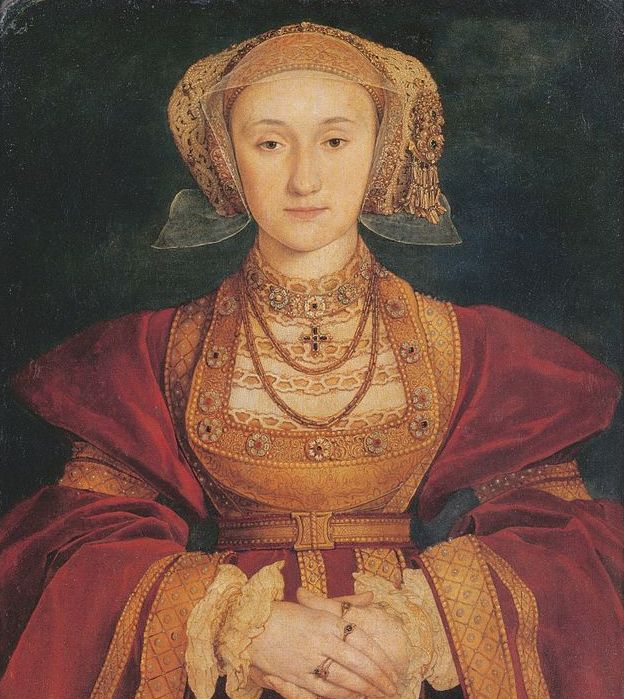
Perhaps as was the case for Henry and his countrymen (and women), the language barrier presented the first obstacle to unlocking the secrets of Anne’s heart. For someone who does not speak German, it felt like an intimidating quest. It required even more than the usual effort, this time to find those who could literally interpret the silent stories locked within the fabric of the buildings and cities that bore witness to the first twenty four years of Anne’s life. Fulsome help from local historians, archivists, guides and translators prepared me well for my first encounter with Anne on her native, German soil.
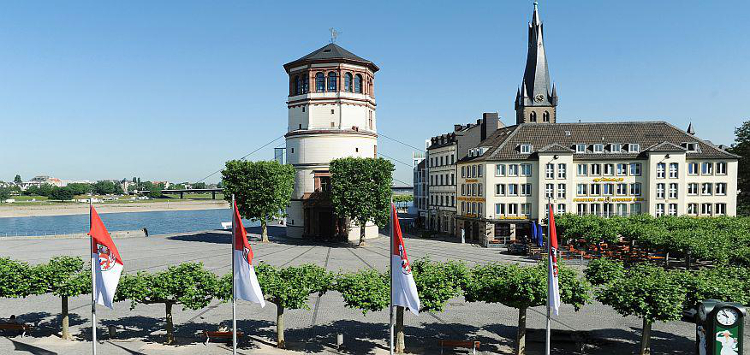
The day itself was inauspicious; although it was the height of summer, Düsseldorf, the place of Anne’s birth was blighted by heavy, relentless rain. Early in the morning, I made my way along the near deserted streets of the city’s Aldstad [Old Town], a decrepit umbrella barely shielding me from the squally showers. I quickly found myself at the place of Anne’s birth, the site of the now lost City Palace. One remaining tower stands proud in the centre of Burgplatz [Castle Place], telling you that you have arrived in the right place. Here was the beginning of Anne’s strict upbringing at the ducal court. Growing up never ‘far from her mother’s elbow’, the Duchess Maria always looked ‘straightly to her children’, raising them to live up to the values prized at the ducal court – those of modesty, subtlety, devotion to faith and purity being first amongst them. It was while researching life at the City Palace of Düsseldorf that I learnt about the extreme propriety of German court life. For example, when Anne was nineteen, a proclamation set forth requirements for ‘daily quiet and orderliness’, with no ‘spontaneous parties’; at nine o’clock in the evening, the last glasses of wine were poured before being locked away for the night by the hofmeister [master of the palace]. After this time, ‘playing, drinking or sitting together’ by members of the court was strictly prohibited. How different to the life Anne Boleyn seems to have lived at the French court!
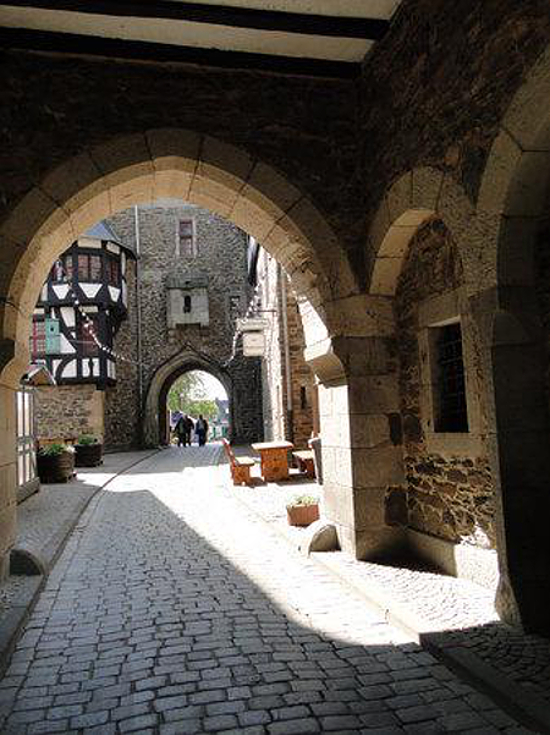
Not far from Düsseldorf, nestled amongst the wooded hillsides of the Rhine Valley, I had my second encounter with Anne. It was here, of all the places visited in connection with the German princess, that I felt I finally broke through into her world, appreciating her with new eyes for the first time. Schloss Burg is a fortified hunting lodge, perched imperiously atop a plateau of rock, its vistas stretching out over lush green forest. It is said that it was here that Anne spent a good deal of her childhood with her mother and her two sisters, Sibylle and Amelia. I was met by a warm-hearted, generous castle guide, an American called Cevin Conrad, who has lived in Germany for well over twenty years. Extremely knowledgeable about the castle and life at the ducal court, not only did I see the rooms in which Anne would have spent much of her time, but we were able to compare and contrast everyday life of a renaissance noblewoman of both the English and German courts. From a letter penned by Sir Nicolas Wooton to Henry VIII in 1539, it is well known that Anne’s main accomplishment was needlework, ‘which occupieth most of her time’, and that she [Anne] could not speak any language other than German, or:
…sing or play any instrument, for they take it here in Germany as a rebuke and an occasion of lightness that great ladies should be learned or have any knowledge of music.
Hunting and hawking was also frowned upon as a suitable pastime for ladies of breeding.
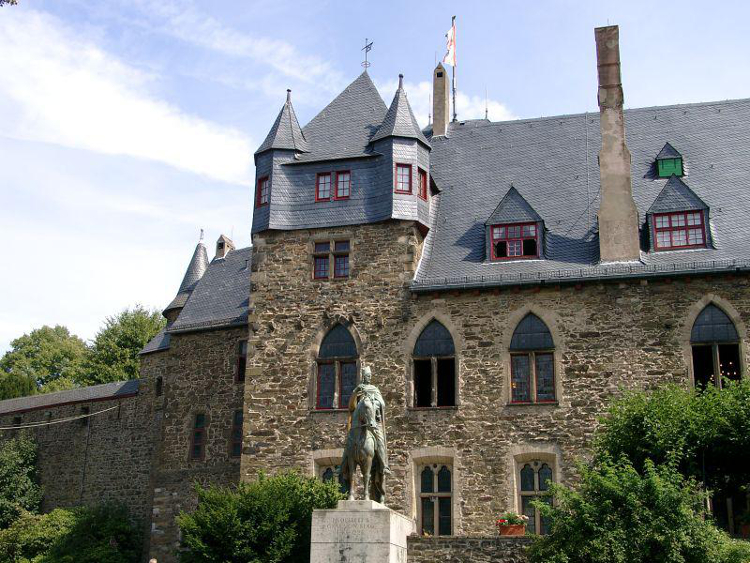
As I stood in the Kemenate, the main privy chamber of the castle, I felt for her; how hopelessly ill-equipped was Anne to the life of an English queen! How easy it must have been for those less generous members of Henry’s court to sneer behind her back at her lack of social accomplishments, and how little she had to share with her husband. Cevin also recounted the loving and intimate relationship between Anne’s mother and father, betrothed at the ages of five and six, respectively. Apparently the couple were devoted, often writing letters of love. It was a practice that would be replicated by Anne’s elder sister Sibylle when she was parted from her husband during the Schmalkaldic War.
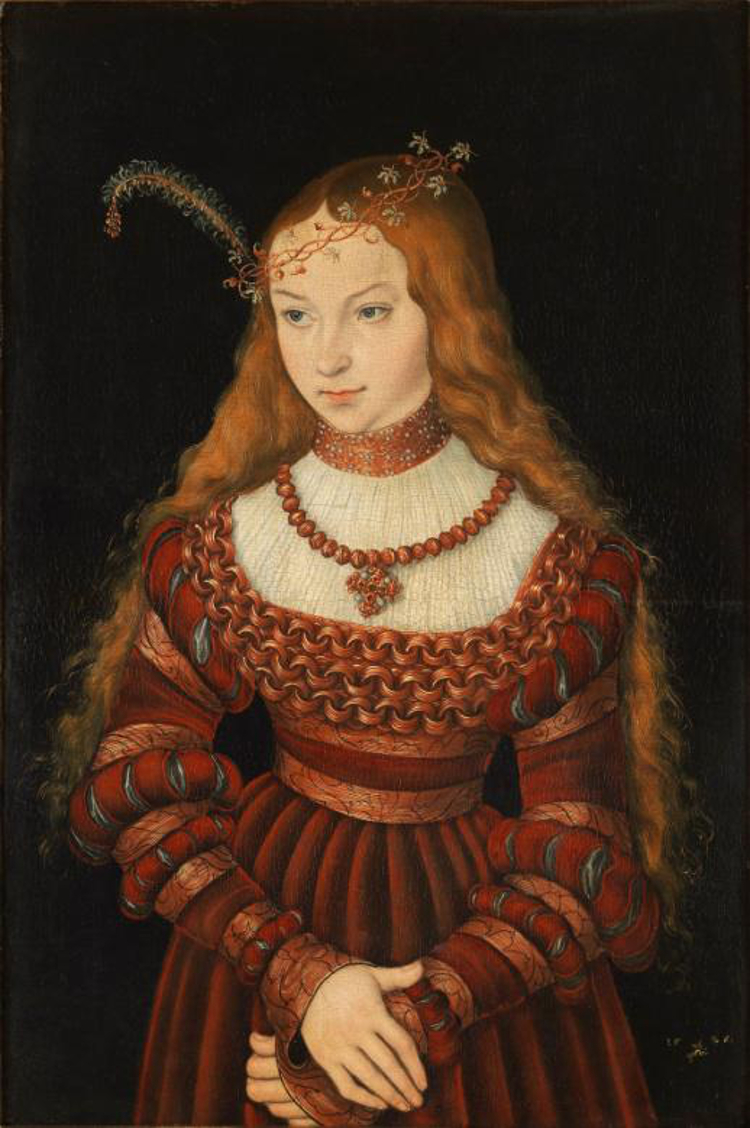
I was struck for the first time by how Anne had been brought up in a warm and loving household. She had been taught how to love with a generous heart. I saw perhaps how, even when rejected by her capricious husband after only six months of marriage, Anne’s early experience allowed her to cling onto a fairytale long after it had, in reality, turned to dust. What is certain though is that this stable, loving, family environment nurtured a kind-hearted, amiable character whose earnest wish had been to please the man who never loved her, and be accepted by a nation who seems never to have fully appreciated this woman’s many admirable qualities.
As you read about Anne’s early years in In the Footsteps of the Six Wives of Henry VIII, my hope is that you too will feel a deeper connection to this gentle soul and, as I did, appreciate afresh that in so many ways, contrary to popular belief, Anne was indeed a beautiful woman.
15 March – Queen Anne Boleyn Historical Writers: The Power of Places
16 March – The Anne Boleyn Files: The Anne of Cleves Heraldic Panels
17 March – Queen to History: Katherine of Aragon
18 March – Nerdalicious: The Making of an English Queen
19 March – Tudor Times: Q & A with Natalie Grueninger
20 March – Through the Eyes of Anne Boleyn: A Royal Procession and the Frozen Thames
21 March – Lady Jane Grey Reference Guide: Rye House
22 March – Tudor History.org: May the Force be With You
In the Footsteps of the Six Wives of Henry VIII is available now from:
Free Shipping Worldwide from Book Depository

This guidebook takes a fresh perspective on the tale of Henry VIII’s six wives, by taking you on a journey through a selection of manors, castles, and palaces that played host to Henry’s unforgettable queens. Explore the Alhambra Palace in Spain, childhood home of Katherine of Aragon; stand in the very room at Acton Court, where Anne Boleyn and Henry VIII publicly dined; walk the cobbled grounds of Hampton Court Palace, which bore witness to both triumph and tragedy for Jane Seymour; visit Dusseldorf in Germany, birthplace of Anne of Cleves; travel to Gainsborough Old Hall in Lincolnshire, where Henry VIII and Catherine Howard rested on their way to York in 1541 and wander the picturesque gardens and panelled rooms of Sizergh Castle in Cumbria, where Katherine Parr spent time in mourning, after the death of her first husband.
Each location is covered by an accessible and informative narrative, which unearths the untold tales and documents the artifacts, as well as providing practical visitor information based on our first-hand experiences of visiting each site. Accompanied by an extensive range of images, including family trees, maps, photographs and sketches, this book brings you closer than ever before to the women behind the legends, as it takes you on your own personal and illuminating journey in the footsteps of the six wives of Henry VIII.
Natalie Grueninger
 Natalie Grueninger is a researcher, writer and educator, who lives in Sydney with her husband and two children.
Natalie Grueninger is a researcher, writer and educator, who lives in Sydney with her husband and two children.
She graduated from The University of NSW in 1998 with a Bachelor of Arts, with majors in English and Spanish and Latin American Studies and received her Bachelor of Teaching from The University of Sydney in 2006.
Natalie has been working in public education since 2006 and is passionate about making learning engaging and accessible for all children.
In 2009 she created On the Tudor Trail (www.onthetudortrail.com), a website dedicated to documenting historic sites and buildings associated with Anne Boleyn and sharing information about the life and times of Henry VIII’s second wife. Natalie is fascinated by all aspects of life in Tudor England and has spent many years researching this period.
Her first non-fiction book, co-authored with Sarah Morris, In the Footsteps of Anne Boleyn, was published by Amberley Publishing and released in the UK in late 2013. Natalie and Sarah have just finished the second book in the series, In the Footsteps of the Six Wives of Henry VIII, due for publication in the UK on 15 March 2016 and on Amazon US on 19 May 2016.
You’ll find Natalie on Facebook, Twitter and Instagram.
Dr Sarah A. Morris
 Sarah is a creative soul, as well as an eternal optimist who generally prepares for the worst! She is an advocate of following the heart’s deepest desire as a means to finding peace and happiness. To this end, her writing is a creative expression of her joy of both learning and educating.
Sarah is a creative soul, as well as an eternal optimist who generally prepares for the worst! She is an advocate of following the heart’s deepest desire as a means to finding peace and happiness. To this end, her writing is a creative expression of her joy of both learning and educating.
Drawn by an inexplicable need to write down the story of Anne Boleyn’s innocence, she published the first volume of her debut novel, Le Temps Viendra: a novel of Anne Boleyn in 2012; the second volume followed in 2013. That same year, her first non-fiction book, co-authored with Natalie Grueninger called, In the Footsteps of Anne Boleyn, was also published. Hopelessly swept away by an enduring passion for Tudor history and its buildings, her latest book, the second of the In the Footsteps series entitled, In the Footsteps of the Six Wives of Henry VIII, is due to be published by Amberley Publishing in the UK on 15th March 2016 and in the US on 19th May.
She lives in rural Oxfordshire with her beloved dog and travelling companion, Milly.
You’ll find Sarah at www.letempsviendra.co.uk, or via her blog, This Sceptred Isle https://letempsviendra.wordpress.com/.



